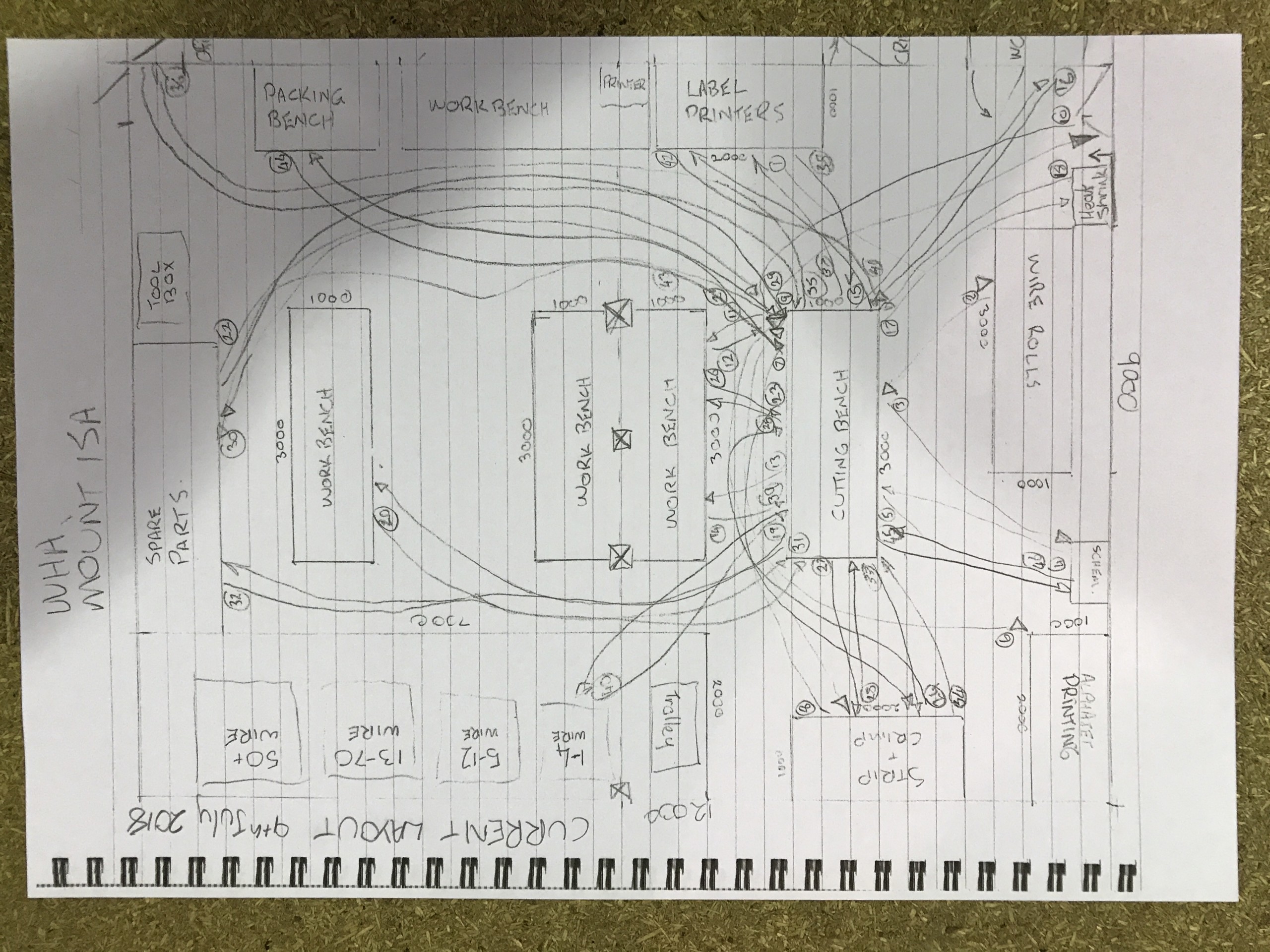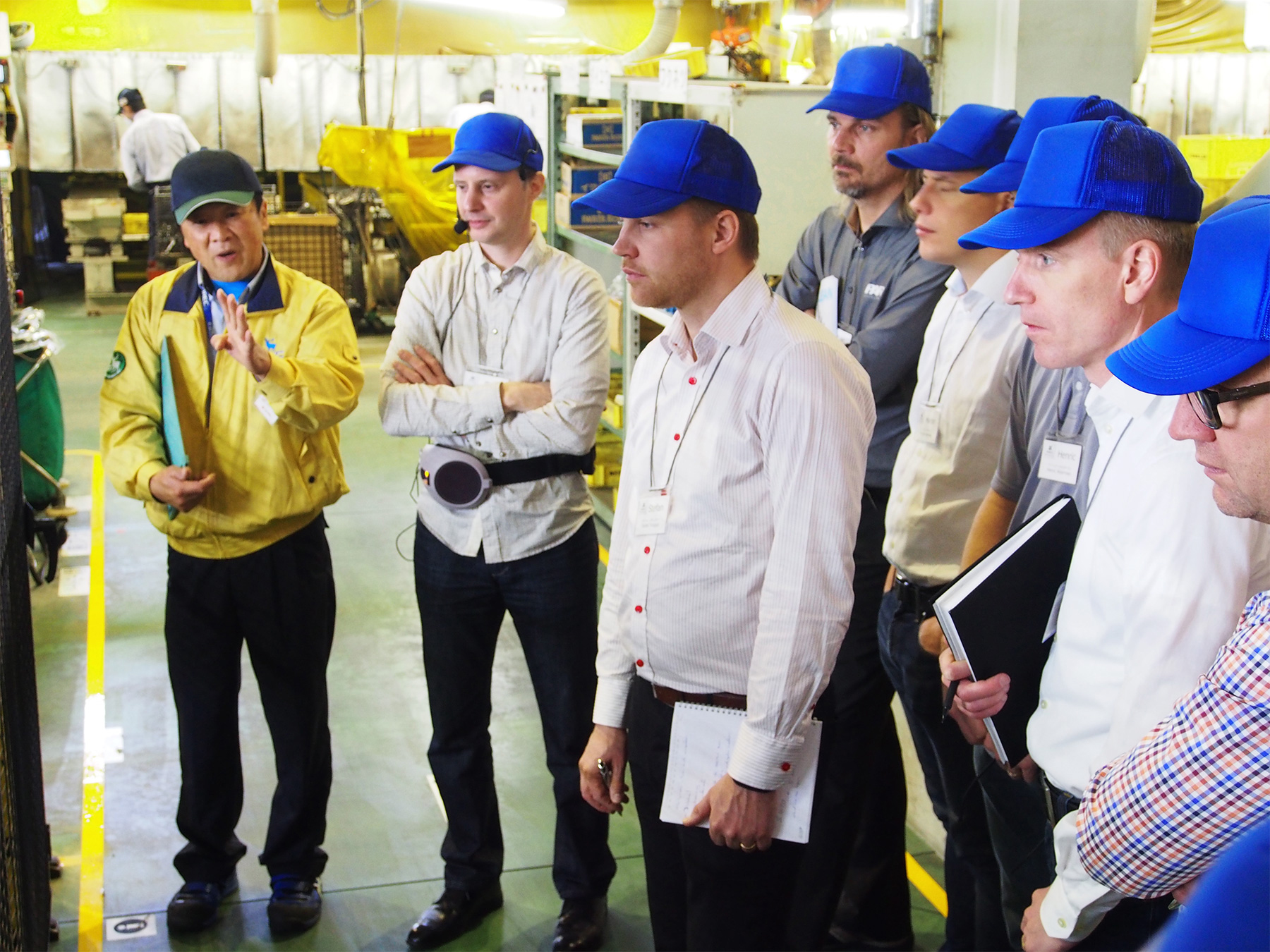Creating clarity in your business processes with data

The collection of data leads to huge gains through the removal of non-value added waste from your process.
Quite often when we come into a manufacturing situation, we don’t know exactly why work is taking so long, why things aren’t going right
But what we do see are a lot of defects or work in progress in the factory.
We have excess inventory, excess motion, excess waiting, overproduction as well as excess transport, quite often because the layout is not great. So there are a couple of early techniques I really want to look at. Downtime analysis and spaghetti mapping. And the best way to implement these techniques is to engage with your teams very early on in the collection of the necessary information.
The first step in the gathering of information is getting a team together. Identify the challenges they face and have a discussion with them around alleviating some of the identified frustrations. We then ask them to record their downtimes over the course of a set period of time. Sometimes just one week is suitable, this really depends on the facility. We record their downtime. The team will compartmentalise their downtime into categories and be given the opportunity to include any other issues they feel are contributing to their production’s downtime.
Once the downtime data is collected and categories have been established, we graph it and Pareto the results to find the strongest indicators of downtime. From there, we can actually start to work further towards establishing what the root cause of the downtime is. It can be staring us right in the face, really simple things, that are easy to solve.
Qualifying a Downtime Event– how do we see what’s right in front of us?
A downtime event is a defect event, causing a lag in production time. It is qualified by anything that’s not adding value to the product for the customer, stopping us from progressing with value-added work. So a downtime event could be a broken-down machine, missing information leading to the need to ask questions or missing materials. It could be a defect created in the manufacturing process that we need to stop and fix. All these things create downtime.
Another important thing to consider when you’re trying to get a lift in productivity in a factory is that some of this downtime can actually be created by the factory’s layout, generating the unnecessary movement of people and materials. Things like the amount of inventory, work in progress, the weighting of parts, the transportation, even driving behaviours around overproduction, is quite often a result of ineffective factory layout. Potentially your factory covers quite a large area and there is a lot of distance between steps, impacting your teams’ productivity. But how do we generate a clear picture of this?
Introducing Spaghetti Mapping- can you see it now?

So when you’re trying to understand the purpose of spaghetti mapping, it’s imperative that we recognise we’re interested in the motion of people. A team conducting a spaghetti mapping exercise in conjunction with their downtime analysis has the tools to develop a clear understanding of where people are moving, impacting their productivity.
The spaghetti mapping exercise is pretty simple. It just looks like spaghetti all over your floor plan, once recorded. The spaghetti of lines clearly tracks every movement of team members away from their workstation in order to complete their part in the production, back at their work station. You quickly identify where people are having to walk too far, or where access to common tools or materials has become an issue.
Spaghetti mapping, along with the downtime analysis, facilitates the design of an efficient factory layout that takes into account removing excess motion from your process. Together, they’re powerful tools. The best thing about these tools is it only takes a couple of weeks to pull together the required information and develop a pretty solid plan about where you’re going to go next.
The combination of the teams’ involvement in the identification and collection of downtime event data, along with the visual nature of spaghetti mapping is guaranteed to generate great results in improving your factory’s processes.
Reach out if you want to know more about how to create a culture of continuous environment in your workplace.
Check out our Capability Training options.
or
Book a discussion to find out how we can help your business.
Respect,
Daniel.
Subscribe for updates
We provide free updates and advice regularly to help you improve your business and leadership skills, and for exclusive content there is a paid subscription too!
Follow us on YouTube
Our YouTube channel is a must for Leaders in business who want to empower their teams and improve their processes. You'll find plenty of our current thinking there
Build your Capability with our Members Program

We do consulting differently, in that we believe in building your capability to improve - we want to provide you with the secrets to success, not keep it all to ourselves! Our exclusive Member Program coaches you to be a great Leader, to empower your people to drive improvement, and identify large gains in employee engagement, quality and performance.
Talk to a consultant
We love to have a chat. We also like to make sure we have time just for you. You can book a chat and we can discuss your continuous improvement journey. We are happy to provide as much obligation-free advice as we can during the call, including what would be the recommended next steps for you to take.

